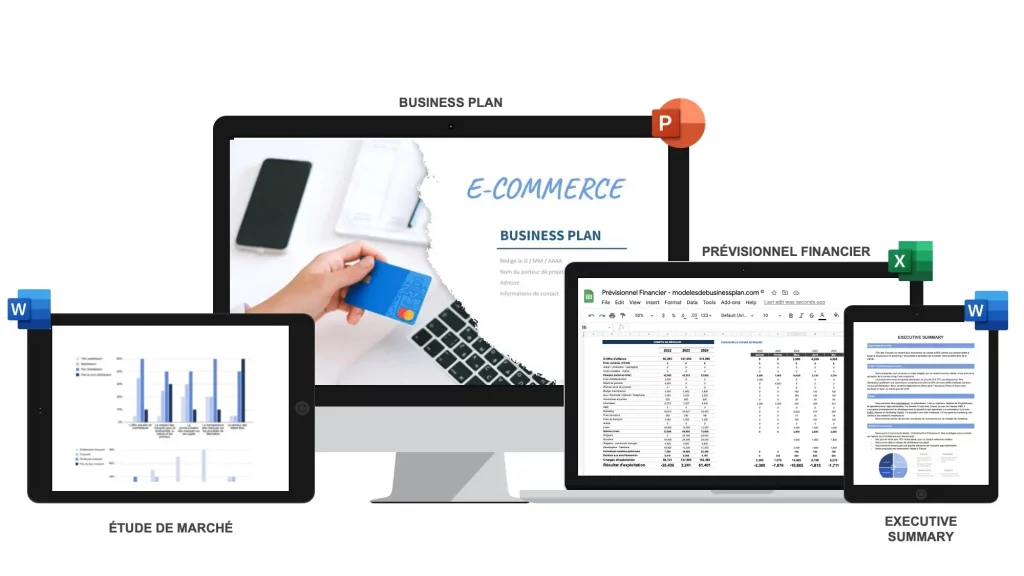
- Introduction
- Advantages of the main models
- B2C: From professional to customer
- B2B: Transactions between professionals
- B2A: Between business and administration
- E-commerce between individuals
- C2C : Consumer to Consumer
- C2B: Customer to professional
- Getting started in e-commerce
- Before starting your project
- E-commerce risks
- Selling online: IvoireAchat the best solution
Find the best deals at unbeatable prices!
Discover a selection of quality products at great prices. Simplify your shopping and save with us. 💰✨ #LessCostButBetter 🏆
It’s cheaper and better, so why pay high prices elsewhere? take advantage
To place an order on IvoireAchat, it’s better to create an account. However, this is not compulsory.
IvoireAchat is a reliable and trustworthy platform, as demonstrated by the 20 million users who visit it every month. You can order online without risk.
Introduction
E-commerce is a fairly recent sales method, based essentially on the Internet, and growing all the time. In fact, e-commerce revenues exceeded $1,030 billion in the USA alone in 2022, and figures reached 146.9 billion euros in France in the same year, an increase of 13.8% versus 2021. Of course, there are many companies offering products for sale to the individual customer. But there are also other kinds of web stores, aimed at different target groups. So there are plenty of opportunities to be seized, especially if you’re planning to open your own online store. Let us shed some light on the subject, and tell you more about the different forms of e-commerce already in place…
Definitions and advantages of the main professional models
B2C: From professional to customer
The B2C principle is the one we spontaneously think of when we talk about e-commerce sites. This acronym stands for “Business to Consumer” and refers to all transactions carried out between a company and individual consumers. In other words, it’s the most popular sales model on the Web.
In B2C, commercial enterprises sell directly to individuals. The customer is the final consumer of the product or service sold. Let’s look at an example. When you buy shoes from an online shoe store (to wear yourself or to give as a gift), this is an e-commerce transaction between a selling company and a consumer. It is therefore a B2C form of e-commerce.
In business jargon, when we speak of B2C, we also mean all the communication revolving around the sale itself, aimed at potential or existing private customers. In other words, the B2C model also includes all consumer-oriented marketing management.
B2B: Transactions between professionals
B2B is a type of business-to-business trade. The acronym stands for “Business to Business”. For example, this could involve commercial relations between a manufacturer or wholesaler and a retailer. If you’re embarking on an e-commerce adventure, you’re likely to be involved in two types of e-commerce.
Firstly, you’ll need to buy your products from a supplier. As you’ll be a professional, this will be a B2B relationship. Then, you’ll resell the products you’ve purchased to individual customers. In this case, the relationship is B2C. These two models are perfectly complementary.
B2B is not end-customer oriented. It only addresses a database of companies. The products purchased and the sales experience are therefore not the same. While B2C is essentially about the finished, physical, mass-produced product, B2B integrates different types of items as raw materials, which can then be repackaged or combined before being sold to end consumers. In B2B, the purchasing and negotiation process is generally longer. Indeed, it very often involves more buyers.
What’s more, their expertise is not the same as that of individual customers. Professionals know exactly what they want, and therefore have much more technical expectations. The marketing message delivered to them is therefore not the same as when addressing individual customers.
In B2C, the marketing strategy is to trigger emotion in the buyer. In B2B, purchases are often much more rational, based on tangible, concrete and measurable data. The buyer’s primary aim is to rationalize his purchase, and then get the best possible return.
B2A: between business and administration
B2A stands for “Business to Administration”. This form of e-commerce is somewhat akin to B2B, and is not aimed directly at end-users. It involves transactions between companies and government agencies online. It can also be called B2G, for “Business to Government”. It’s exactly the same model.
B2A concerns all relations between companies and public authorities. It generally involves the exchange of legal or administrative documents. If this form has developed considerably in recent years, it’s primarily because companies and public authorities are increasingly dealing over the web, to speed up procedures. Electronics improve efficiency, and B2A is gaining ground all the time. Various tools and forms can now be downloaded directly online. Tax payments are also made via the Internet.
Need an example to help you understand? When a company has to pay taxes, such as VAT or business property tax, the tax authorities send a notification via a dedicated Internet service. On receipt of the tax notice, the company pays the tax due to the government. This is a commercial exchange between a company and the administration, between an online store and a French public service, for example. This is a B2A e-commerce solution.
What are the different types of e-commerce between private individuals?
C2C: “Consumer to Consumer”, quite simply!
The C2C model, “Consumer to Consumer”, refers to the management of products or services between customers themselves. It’s a fast-growing form of online shopping that doesn’t require a physical store.
The principle is simple: as an individual, you have an item for sale. All you have to do is post an ad on specialized sites, and another private buyer will contact you and buy your product. It’s a parallel economy to the one set up by stores and professionals, and one that’s growing all the time. While this system has existed since the dawn of time, notably through bartering, it now uses a much more recent channel: the Internet.The Web has considerably changed the game when it comes to the second life of objects. Things you no longer use are no longer thrown away. They can be resold and used by others. In the past, the “classified ads” page was left to the physical retailer, allowing sellers to reach only a very limited population.
Today, C2C goes much further, taking advantage of the boom in online sales websites, so that private individuals can reach potential buyers all over France, for example. The main advantage of the C2C experience is the absence of intermediaries, which means lower prices and greater opportunities for bargains.
It’s worth noting that C2C can be applied to the sale of products as well as services. For example, the business of improvised cabs between private individuals, better known as Uber in France and abroad, is indeed a form of C2C.
C2B, selling products and services from customer to professional
C2B is a complete game-changer, turning the traditional profile of e-commerce on its head. It’s all about “Consumer to Business”, i.e. from the consumer to the company. Can’t you see how this kind of e-commerce can work? What if I told you about participative financing or crowdfunding projects?
In C2B, private individuals make their products or services available at their own prices to commercial buyers via dedicated tools or software. So, if a company decides to believe in a project, all it has to do is invest in it, in return for shares in the company or data collection, for example. Need another example? The iStockPhoto business model is a perfect match for C2B. On this platform, photographers upload different types of photos. These can then be purchased by companies, for example, to decorate a network of French physical stores or to illustrate the home page of an electronic software program.
The usual business model is turned on its head. If this is an e-commerce solution that we think of less spontaneously, but which has been working for many years.
C2A, a “consumer to administration” business model.
Finally, C2A takes up exactly the same idea as in the previous point, with C2B. However, this time, the company is replaced by the government. In other words, individuals sell products or online solutions directly to government bodies.
For example, these may be consulting solutions for the development of training plans, for the national education system, or for the preparation of online tax returns. Similarly, some government agencies may call on copywriters or design specialists to develop their web pages or content. C2A is very similar to B2A. It focuses essentially on improving efficiency within administrations and government, notably through the use of new information and communication technologies.
Of course, the form you choose won’t be the only criterion determining your e-commerce business project.
In fact, as we saw at the beginning of this article, it’s highly likely that you’ll have to combine two types of e-commerce for a single activity (such as B2B for your purchases and B2C for the resale of your products).
Getting started in e-commerce
What questions should you ask yourself before starting your project?
To ensure the success of your e-commerce project, you’ll need to take a number of factors into account. What kind of products will you be offering? Will you offer physical products, digital products or services? Will you be selling on your own website or via marketplaces? What are the best products to sell on the Internet to help you succeed?
These are just some of the questions you’ll need to ask yourself before embarking on the great adventure of e-commerce business.
Communication, marketing, logistics… What are the risks of e-commerce?
The risks of e-commerce are minimal, and are reduced by the fact that it is simpler and more accessible than physical commerce. Your biggest challenge will be to recruit more and more customers, and keep them coming back. You’ll understand that a poorly thought-out marketing strategy can lead to substantial financial losses.
Also, always be alert to the Internet: cyber-attacks, online fraud and logistical problems can damage a company’s reputation and erode consumer confidence. Fortunately, you can rely on increasingly secure online tools – and that includes your e-commerce solution!
What’s the best tool for creating a store and selling online?
The IvoireAchat solution is the tool best suited to your e-commerce needs: 400 functionalities, 50 SEO optimizations, a highly-trained text generation AI for all types of online businesses, personalized support from business coaches who listen to you, free online sales training… What more could you ask for to succeed in e-commerce? Your web store is waiting to attract as many users as possible: test IvoireAchat free of charge and discover all the advantages of e-commerce!





1 Comment